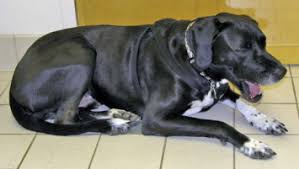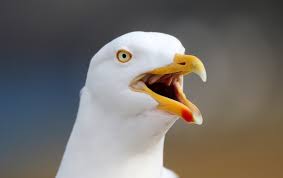Displacement behavior is commonly associated with self-grooming, touching, or scratching, exhibited when an animal experiences a conflict between two drives, such as the desire to approach an object while simultaneously feeling fear toward it.
With the decline of drive theory, animal behaviorists paid little attention to displacement behavior until Maestripieri et al. (1992) highlighted its potential as a reliable measure of anxiety levels.
Since then, a substantial body of research has emerged evaluating the effectiveness of displacement behavior measures, also known as self-directed behavior (SDB), as indicators of anxiety.
Particular attention has been given to primates, including humans. Measures of displacement behavior have been applied in psychiatric studies of anxiety (Troisi et al., 2000).
Castles et al. (1999) observed an increase in SDBs among wild olive baboons, depending on whether the nearest animal was dominant or subordinate. The presence of dominant animals led to a 40% increase in self-directed behaviors, indicating heightened social anxiety due to proximity to a dominant individual.
Chimpanzees also exhibit increased levels of SDBs in anxiety-inducing situations. Baker and Aureli (1997) found that, in captive chimpanzees, vocalizations from animals in neighboring cages triggered more SDBs when the chimps were housed in groups.
However, socially isolated chimps did not respond with increased SDBs to vocalizations from neighboring cages. These vocalizations may signal an impending attack.
Baker and Aureli (1997) suggested that isolated animals recognize the absence of other chimps in their cages, leading to a sense of safety despite hearing vocalizations. Leavens et al. (2001) presented captive chimps with problems of varying difficulty.
Chimps that started with easy problems and then progressed to more challenging ones exhibited more SDBs when faced with difficult problems. Conversely, chimps that only encountered difficult problems did not display increased SDBs. Positive auditory reinforcement during problem-solving reduced SDBs.
Read Also: 8 Medicinal Health Benefits of Xiao Mi La Pepper (Capsicum annuum)
Displacement Activities and Arousal

In 1940, Tinbergen and Kortlandt independently identified a behavioral phenomenon later termed displacement activity, which has since attracted significant attention.
Although no absolute criteria exist for recognizing displacement behavior, the term applies to behavior patterns that appear out of context with the preceding or following actions.
This may occur when behaviors seem functionally disconnected from adjacent actions or arise in situations where typical causal factors appear absent or relatively weak compared to those shaping the broader behavioral framework.
Displacement Activities in Animals
Displacement activities occur in three main situations:
i. Conflict
ii. Frustration of consummatory acts
iii. Physical prevention of an action
Several theories have been proposed to explain the mechanisms behind displacement activities. Various behaviors have been reported as displacement activities, even within a single species. However, these variations require further revision and analysis.
Studies on specific species typically indicate only a few behaviors that commonly occur as displacement activities. None of the existing theories provide a definitive explanation for why particular behaviors are more frequent than others. These behaviors are often linked to the animal’s natural response patterns and are typically prepotent within its repertoire.
Read Also: 10 Medicinal Health Benefits Of Ximenia Americana (Tallowwood)
Neurological Findings in Gulls

A systematic study of the forebrain and brainstem of herring and lesser black-backed gulls (Larus argentatus and L. fuscus) involved electrical stimulation to explore behavioral responses.
The study involved chronic implantation of monopolar electrodes, delivering sine current stimulation at 50 Hz with intensities ranging from 10 to 150 µA. The observations extended over multiple testing sessions spanning two or more months. Electrode placements were later verified histologically.
The study identified a behavioral syndrome characterized by preening, staring down, pecking, yawning, squatting, relaxation (plumage fluffing, neck shortening, reduced activity, intermittent eye closure), and occasional sleep. Many of these behaviors were elicited from single loci within the brain when stimulation intensity was kept below 50 µA.
Displacement behaviors are regulated by a neural de-arousal system rather than being independent responses. Observations on unstimulated gulls also indicate that these behaviors occur in sequences, further supporting the idea of a coordinated regulatory system.
Preliminary experiments with hypnotic drugs such as pentobarbital sodium and tribromoethanol have also induced similar behavioral patterns.
Function of Displacement Activities
The occurrence of sleep as displacement behavior may be regarded as a regulatory overshoot. Grooming and similar behaviors may contribute to de-arousal by reducing external stimuli, shifting attention to less novel stimuli, or generating repetitive stimulation. Understanding these mechanisms provides insight into the function of displacement activities in different species.
Examples of Displacement Behavior in Animals

A. Displacement Behavior in Dogs
Displacement behaviors in dogs can be categorized into two types:
1. Self-directed behaviors: Actions performed on the dog itself (e.g., self-grooming, licking, or yawning).
2. Re-directed behaviors: Actions directed toward external objects or other animals (e.g., picking up a toy, barking, circling, grazing on grass, or gulping water).
These behaviors occur during emotional conflict and serve as an outlet for dissipating energy. For example, in greeting situations, dogs may experience conflicting instincts.
Normal dog greetings involve licking the mouth and sniffing the genital area, behaviors that many humans discourage. When these behaviors are suppressed, dogs may exhibit displacement behaviors such as excessive drinking, yawning, or jumping.
Reprimanding a dog for displacement behaviors without providing an alternative response can increase stress. Instead, teaching a structured alternative behavior, such as sitting or retrieving a toy, helps reduce emotional conflict and prevents undesirable behaviors.
This phenomenon is not exclusive to dogs. In human interactions, individuals may experience similar displacement behaviors in unfamiliar social situations, such as nervous laughter, coughing, or adjusting clothing.
B. Displacement Behavior in Cats
Parmeggiani conducted studies on the cat’s forebrain and brainstem, stimulating different regions to observe resulting behaviors. These behaviors included sniffing, grooming, yawning, lying down, curling up, dozing, and sleeping.
Notably, these behaviors were also observed in unstimulated cats, suggesting a natural occurrence. Rowland and Gluck provided evidence that grooming in cats could replace electroencephalogram (EEG) synchronization typically associated with sleep when tested in an awake state. Leyhausen further identified grooming, sniffing, and lying down as common displacement behaviors in cats.
C. Comparisons with Other Species
In rats, Caspers found that grooming and other unspecified “motor automatisms” were linked to shifts in cortical direct current (d.c.) potential, typically associated with sleep. Positive surface shifts were characteristic of sleep, whereas negative shifts indicated wakefulness. Additionally, Grant reported grooming, digging, and sniffing as common displacement activities in rats.
Neurophysiological Implications
These findings suggest that grooming, preening, and related behaviors are controlled by neurophysiological mechanisms that also regulate de-arousal and sleep. While displacement behaviors are often triggered by conflict, frustration, or thwarted actions conditions that increase arousal they may serve as a homeostatic mechanism.
Engaging in these behaviors, the animal may regulate arousal levels, mitigating the stress response and restoring balance. Borlyne previously suggested the existence of arousal homeostasis, supported by empirical evidence.
This regulatory function appears necessary if arousal correlates with the rate of information processing, ensuring the nervous system operates efficiently within its communication capacity.
In conclusion, Maestripieri et al. (1992) proposed that displacement behaviors can serve as indicators of anxiety levels. Research in animal welfare has leveraged these behaviors to assess anxiety induced by captivity or environmental stressors.
Reductions in self-directed displacement behaviors have been used as a measure of the effectiveness of interventions aimed at improving the welfare of captive animals. Understanding displacement behaviors provides valuable insight into stress regulation and animal well-being.
Do you have any questions, suggestions, or contributions? If so, please feel free to use the comment box below to share your thoughts. We also encourage you to kindly share this information with others who might benefit from it. Since we can’t reach everyone at once, we truly appreciate your help in spreading the word. Thank you so much for your support and for sharing!
Read Also: The Impact of Business Waste Recycling Services on Our Environment

